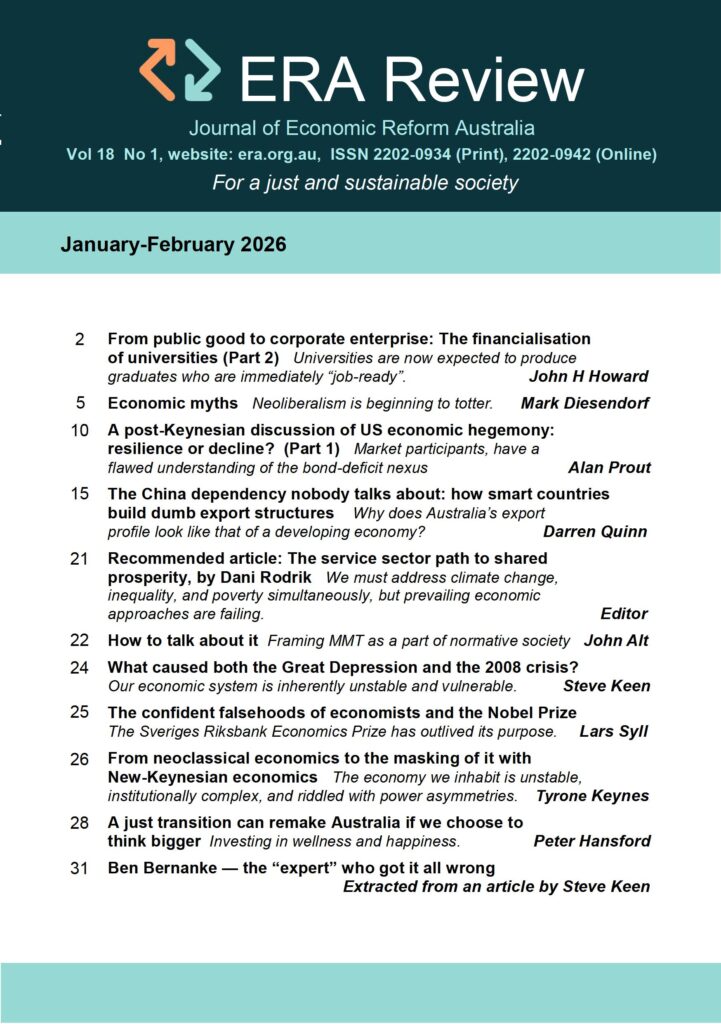Sovereign money – Joseph Huber
The following material has been extracted from Prof Joseph Huber’s website Sovereign Money (http://sovereignmoney.eu).
What is Sovereign Money?
Sovereign money is legal tender (lawful money) issued by a state authority, in Europe by a state’s independent central bank, or the ECB. The counterpart to sovereign money is commercial bank money, i.e. demand deposits on current bank account.
Bank money is created whenever a bank grants a loan, or overdraft, or buys stocks and bonds or real estate, and pays for this by crediting the customers’ or sellers’ accounts. These credits need to be backed by sovereign central-bank money, but just to a residual 2.5 per cent.
What would a sovereign money system look like?
If today’s fractional reserve system cannot be said to be sovereign, what then would a sovereign money system look like?
An advanced modern sovereign-money system would be based upon all of the three components of a state’s monetary prerogative:
- Determining a country’s standard currency unit
- Issuing the money denominated in that unit
- Realising for the public purse the profit accruing from creating new money.
Neo-Austrians between Gold Standard, 100% Reserve, and Free Banking
The Neo-Austrian School and New Currency Theory share a similar criticism of fractional reserve banking. Strangely enough, the problem is blamed by the former on government and central banks rather than the banking industry.
The Neo-Austrian idea of money and banking reform then is free banking, i.e. a system without legal-tender laws and central banks, on the basis of a return to a 100% gold reserve. This appears to be quixotic, but is a revelation to others.
Currency and Banking Teachings
Currency versus banking teachings represent a frame of reference of lasting relevance to modern money systems. The expression New Currency Theory (NCT) makes reference to the historical Currency School of the first half of the 19th century. It was opposed by the Banking School of the time.
Most economists seem to have forgotten about this controversy. At the same time, most monetary reform initiatives today in fact stand for new currency teachings.
100% Reserve (Chicago Plan) and Plain Sovereign Money
A recent IMF research paper published under the title The Chicago Plan Revisited has found encouraging resonance. At the same time, this has contributed to some confusion in that there is now a tendency to identify a 100% reserve requirement (full reserve) of the 1930s with the up-to-date approach to plain sovereign money as championed by most contemporary monetary reform initiatives. The 100% reserve proposal is not the same as plain sovereign money.
Modern Money Theory in comparison to New Currency Theory
New Currency Theory (NCT) and Modern Money Theory (MMT) share a number of views on how fractional reserve banking works. It nonetheless turns out that MMT – in spite of its claim to stand for a sovereign-currency system – is closer to representing a new banking doctrine rather than a currency teaching.
Joseph Huber occupies the chair of economic and environmental sociology at Martin Luther University, Halle-Wittenberg, Germany. He has written influential papers on monetary policy, and is known widely as one of the founders of ecological modernization theory.






























